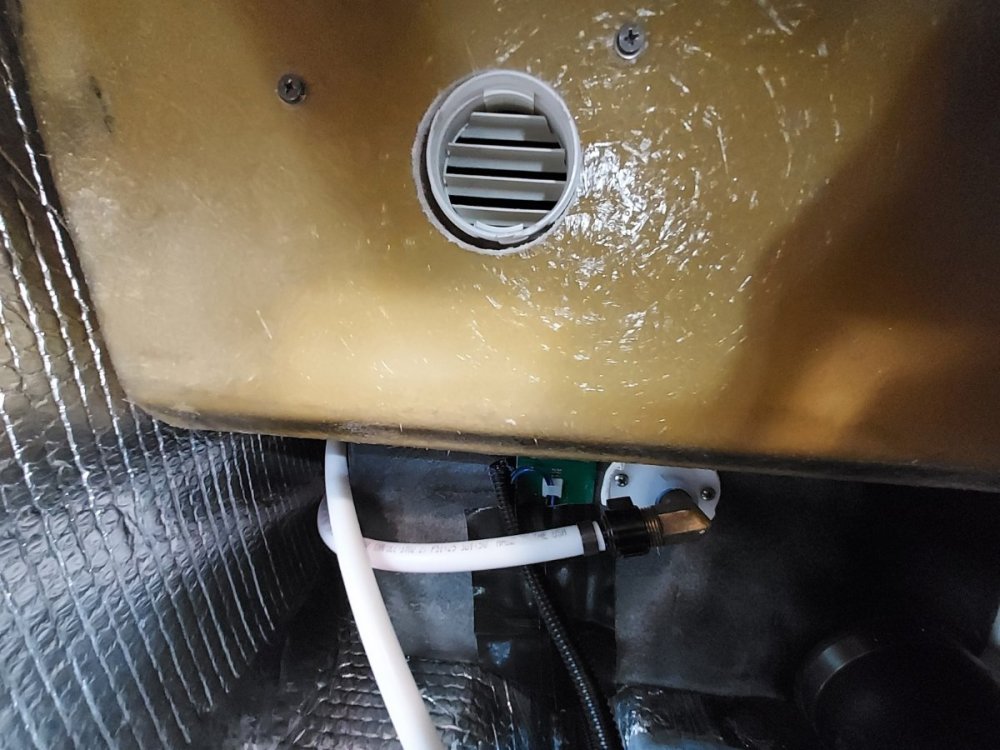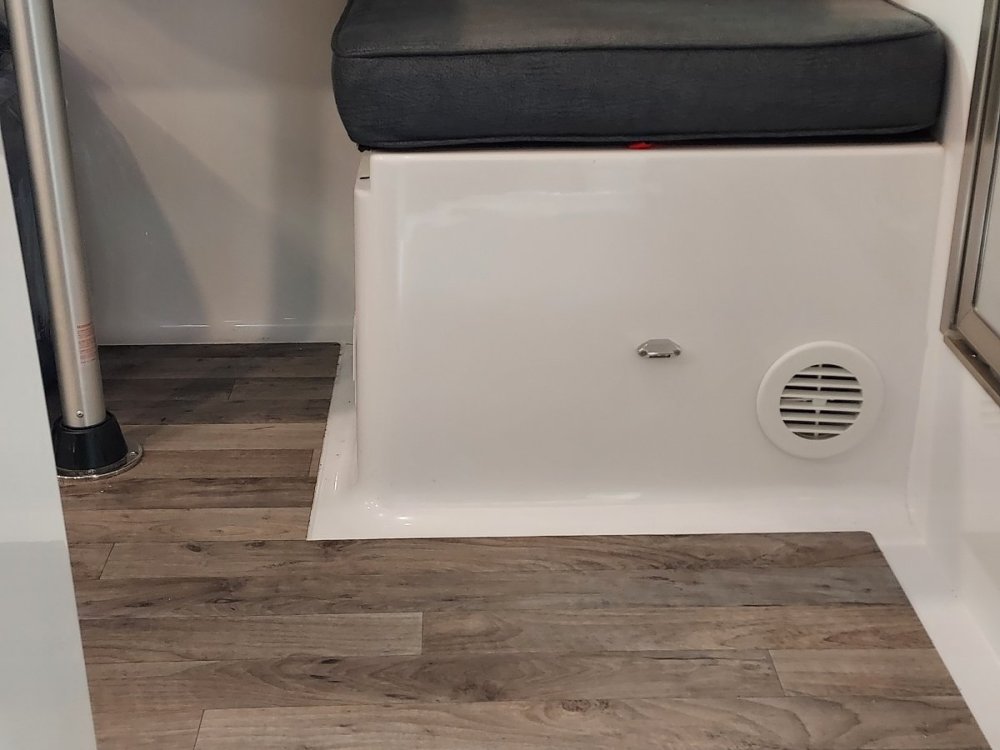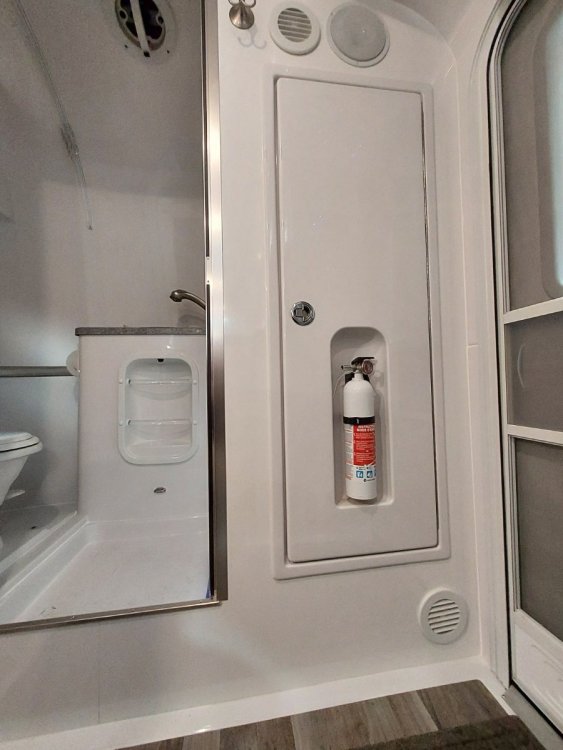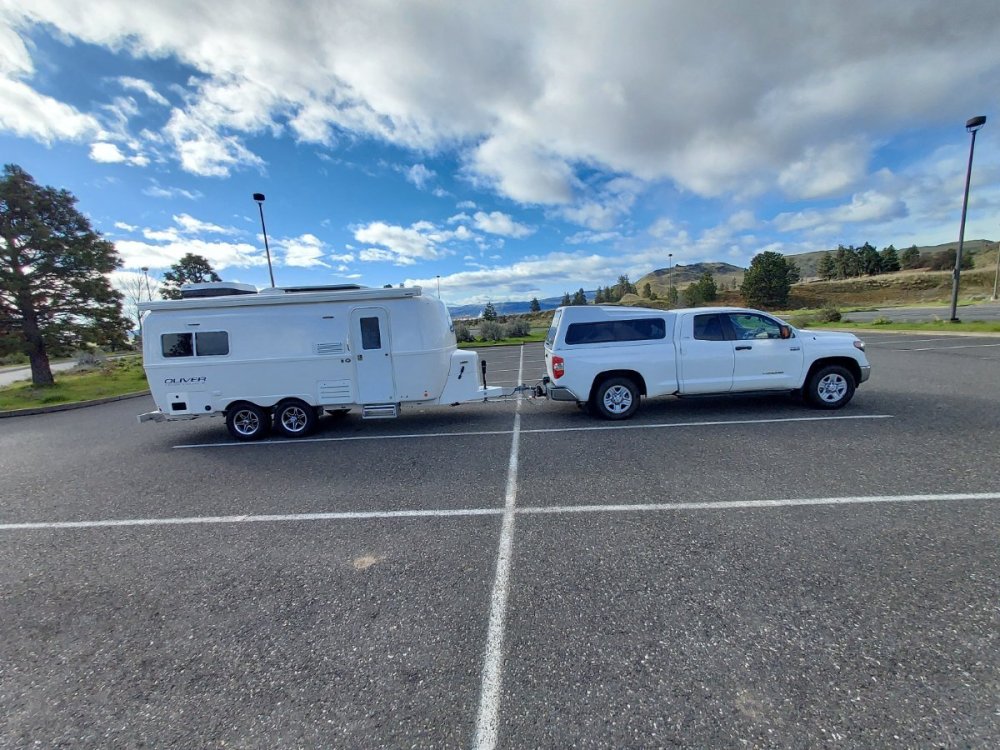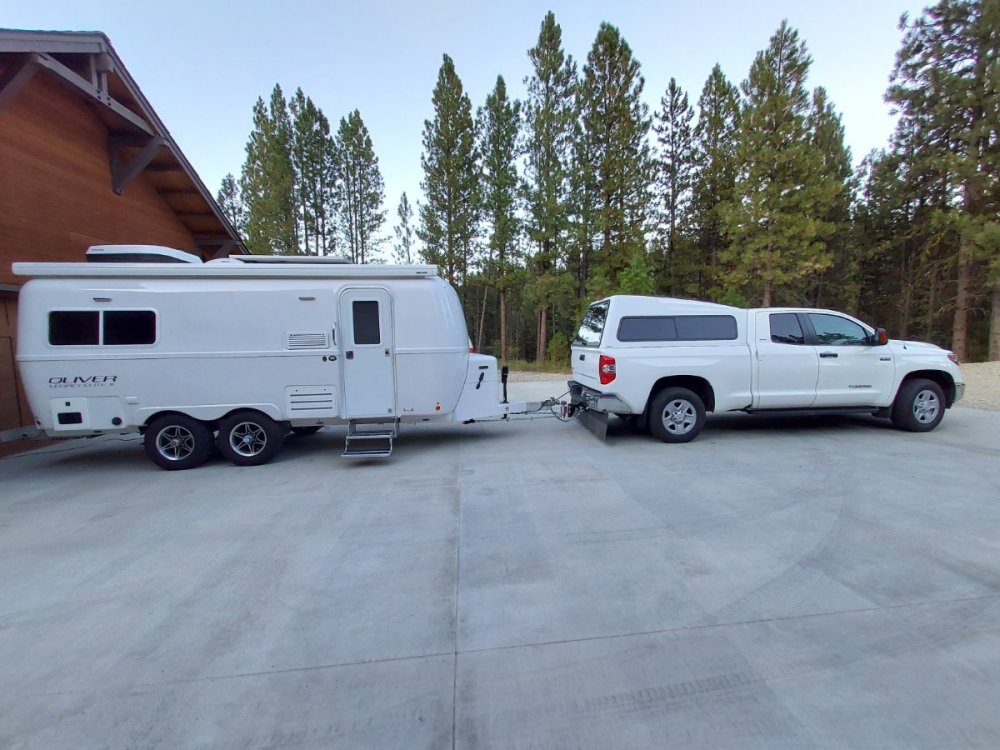-
Posts
923 -
Joined
-
Last visited
-
Days Won
18
Everything posted by Rivernerd
-
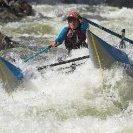
Inverter Operation
Rivernerd replied to msteen's topic in Welcome To The Oliver Travel Trailer Forums
You may have the new bus bar Oliver started installing in 2022s. We have one in our Hull #1291. Have you checked the voltage at the battery bank with a reliable multimeter, then compared it to the voltage reading on the Seelevel monitor when using an appliance (like the microwave) on inverted power? A significant difference between the two readings could be explained by the new bus bar, which causes a significant DC voltage drop. We kept getting inverter shutdown under large (1400-watt+) DC loads until Oliver Service figured out that the new bus bar was draining lots of DC power. We would have 13+V at the battery but the inverter was reading below 12V when under load. The "solution" for us was to drop the Low Battery Cutoff setting on the inverter down to 11.5V, from the factory default of 12.0V. I recommend you open a service ticket. -

Chevrolet Tahoe vs Oliver Legacy Elite ll
Rivernerd replied to Hperdue's topic in Welcome To The Oliver Travel Trailer Forums
I expect that is a length, not width, issue. Does your 3500 have an 8' bed? Could you trade for one with a shorter bed? -
We use Thetford drain valve lubricant in both the gray and black tanks. We add add some lubricant after each time we drain, per the instructions on the bottle. https://www.amazon.com/Thetford-Drain-Valve-Lubricant-15843/dp/B000BGK2L0/ref=sr_1_2_pp?hvadid=282728663680&hvdev=c&hvlocphy=9029558&hvnetw=g&hvqmt=e&hvrand=3699281593567143709&hvtargid=kwd-407048891006&hydadcr=8059_10893331&keywords=thetford+rv+drain+valve+lubricant&qid=1695219174&sr=8-2 And, we leave the "stinky slinky" attached. So far, no notable leakage.
-
My oversight. Glad you've got the Varioheat, which means you should have the return air vent from the bath to the underside of the front dinette seat. Our tests last November suggest that, with the Varioheat running to maintain cabin temp at about 70 F, and with the external faucet removed from the hose and re-installed to the hose through the access under the street side bed, the -plumbing in your Elite II should be protected from freezing with outside temps down to about 15 F. As noted above by Mike and Carol, a small electric space heater placed under the rear dinette seat blowing aft can make a big difference keeping the "bilge" areas where the plumbing is located warm. As we like to leave the bed made up in our standard bed Elite II, we prefer the space heater method to leaving the hatches open to allow warm furnace air to circulate.
-
The answer to this question depends, to some extent, on how recently your hull was manufactured. Our late 2022 Hull #1291 with the Truma Varioheat furnace can withstand colder outside ambient temps than earlier models because Truma required a redesign of the duct system that includes a return air vent between the bathroom and the under side of the front dinette seat. See photo below: This return air vent enables distribution of more heat to the underbelly of the trailer, providing some additional thermal protection to the plumbing. Your Hull No. 1423 probably does not have the Truma Varioheat, and, therefore, does not have the updated ducting. The thread below contains lots of information about the performance of Olivers of various ages in cold temps: There are adjustments and mods you can make to help the plumbing system better withstand cold temps. The easy one is removing the outside faucet head and re-installing it on the inside of the hull (underneath the street side bed) when camping in cold temps. I have added some additional return air vents to improve circulation of warm air through the otherwise isolated parts of the trailer. See photos below: The bottom line: the plumbing will not freeze in any Oliver, with the furnace running, down to temps in the high 20's. To be able to use the trailer without winterizing at temps below that level, take the steps detailed here, and in the thread embedded above. Good luck!
-

Truck Canopy Removal-Reinstall
Rivernerd replied to Wandering Sagebrush's topic in General Discussion
A concern for sure. But less of a concern with 4-point attachment, as with the My LIfter. -

Truck Canopy Removal-Reinstall
Rivernerd replied to Wandering Sagebrush's topic in General Discussion
My solution enabling me to lift the topper off my truck bed by myself is the My Lifter system. It is much more expensive, but the lift, with canopy, stays suspended below the ceiling of my garage, leaving the entire garage bay usable with the canopy off the truck. https://www.smarterhome.com/products/truck-top-lifter The Rapid Lift/Rapid Stand combo costs less, but occupies storage space when the canopy is off the truck. -
Hull #1291 exhibits nearly identical flexibility up and down when someone is moving about the trailer. Such movement is particularly noticeable when someone is climbing the stairs to enter the trailer.
-
Is there an advantage to filling the remainder of the black tank with water before dumping? For the "Twilight Zone" reasons you so aptly described, I have always drained the black tank first, then left the dump (termination) valve open BEFORE connecting my "black water" hose to the flush port under the bathroom window. Once the drain hose runs clear, I then disconnect the black water hose from the flush port, close the dump valve and then put the drain hose back into the bumper. I have envisioned a spray nozzle inside the black tank which distributes the pressurized water input throughout the black tank flush port, which rinses the residual contents out through the drain hose. Is this not correct? Does filling the black tank before draining result in a cleaner black tank, even though that process risks the awful result you have described?
-

Greasing Dexter EZ flex suspension.
Rivernerd replied to Ken_Judy's topic in Mechanical & Technical Tips
Good point. I was writing for John Welte, who I know has a 2022 Elite II, because his is one Hull # before mine! -
Ours is an SR5, without the TRD package. TRD is not a different Tundra trim level (like Limited or Platinum), but is an add-on to SR5, Limited, etc. trim levels sold for off-roading. The TRD add-ons include upgraded shocks, some extra skid plates and black wheels. I, too, will be interested to hear if some folks believe the TRD package makes it a better tow vehicle.
-
Your Seelevel tank level monitor may be grossly inaccurate, like ours is. If you have lifted the nose and only got a bit more water out, your tank is probably nearly empty, even though the monitor still reads 19%. As Mike and Carol note, a little water in the bottom of the tank will cause no trouble when freezing. I wouldn't. You could end up with road grime in your fresh water tank.
-

Greasing Dexter EZ flex suspension.
Rivernerd replied to Ken_Judy's topic in Mechanical & Technical Tips
Ensure you have at least two jack stands rated for at least 3 tons (6000 lbs.) each. Leave your front stabilizer jack down, so your trailer starts out level. Chock the wheels on one side, then raise the other side using the "stabilizer" jacks, with blocks underneath them, to raise one side of the frame enough to get the wheels off the ground. Place jack stands under the frame just fore and aft of the wheels, at the locations with the "Jack Point" decals. Then remove the wheels. With only one side resting on jack stands rated to support a total of 12,000 lbs. between them, backed up by the stabilizer jack on that side, you will be safe crawling under the trailer. -

Trailer Brake Disconnect Warning/Message
Rivernerd replied to Mike and Carol's topic in Mechanical & Technical Tips
When the brake pads on my 2008 Tundra got thin, the "Brake" warning light on the dash started to light up intermittently. Like you, I knew the pads were near the end of their useful life because I check them when rotating tires. But, I thought the pads still had some life left, so I didn't immediately replace them. The brakes continued to feel solid, so the light made me wonder if there was another issue with the braking system. When I finally got around to replacing the pads on the 2008 Tundra, the "Brake" warning light went out. Lesson learned: when the light comes on, even intermittently, replace the pads (or in case of Oliver brakes, the shoes) sooner rather than later. I concluded the Tundra must have a sensor that activates the warning light when any of the pads get too thin. Please post what you learn after your Oliver brake shoes are renewed. -
Looks pretty similar to the one in your photo!
-
Based on comments from many posters on this forum, I considered trading in our 2019 Tundra tow vehicle for a 3/4 ton Dodge, Chevy or Ford pickup. But, after much research, and bargaining with local dealers, I concluded that 3/4 ton truck prices are still too high for our budget, even given the high prices being offered for Tundra trade-ins. The much lower reliability ratings for the Dodge, Chevy and Ford offerings, compared to Tundras, also weighed heavily in our judgment. So, I determined to make our 2019 Tundra 5.7L V8, with tow package, a more capable tow vehicle, to the extent reasonable. I found comments on Tundra forums suggesting that towing performance, particularly "jounce," would be somewhat improved by the addition of rear air bags/helper springs. Some posters on this forum have already installed them, so I decided to take the plunge. The rear air bags are now installed. As advised by posters on this forum, the air bags are presently set at about 25 PSI. Our next 4-day camping adventure, starting tomorrow, will provide a good opportunity to determine if the towing experience feels any different than before airbag installation. But one difference became quite noticeable when I hooked up the trailer: the rear of the Tundra sat higher, causing the trailer to sit "nose up" when hitched. Because I am compulsive about towing with my trailers as level as possible, I switched the Andersen WD hitch mount from the "up" position (where the ball assembly had been bolted in the lowest position) to the "down" position, with the ball assembly bolted into the top position. Because of the design of the Andersen hitch mount, this resulted in the trailer coupler sitting about 1.5" lower than before. As you can see from the photos below, the trailer once again sits close to level when hitched. The first ("before") photo was taken last April. The second ("after") photo was taken today. Note that in the April photo, the rear truck fender well clearance is less than the front fender well clearance. In the August photo, rear fender well clearance is actually greater than front fender well clearance. So, the airbags are, indeed, preventing "squat" with the trailer attached. Notably, our Tundra came from the factory with rear fender well clearance about 1-1/2" higher than front fender well clearance (37"--front; 38-1/2" rear). I wondered if this was designed to compensate for "squat" when towing a trailer? With the air bags now installed, the truck fender well clearances, with the trailer attached, are the same as the factory clearances with no trailer: 37" front, 38-1/2" rear. I will report our observations of any difference in trailer handling after we return home this weekend. Hope this helps someone choosing to install airbags/helper springs on a Tundra.
- 13 replies
-
- 10
-

-

-

Oliver looking to partnership with RV dealerships.
Rivernerd replied to Katjo's topic in General Discussion
Me too. So far, my choice has worked out about as well as I had hoped. Our Elite II has not been trouble free, but the persistent help I have received from the Service Department, which has enabled me to address all issues so far, has been far superior to what is reported on the Airstream forums. -

Oliver looking to partnership with RV dealerships.
Rivernerd replied to Katjo's topic in General Discussion
As part of the Oliver Service Department's outstanding responsiveness to issues with its trailers, the Service Department frequently refers Oliver owners far from Hohenwald to RV service centers for warranty service. I wonder if, given the increased sales volume, Oliver is hoping to identify, and develop relationships with, better-operated RV sales and service centers nationwide (and perhaps in Canada?) to help the Oliver Service Department keep up with diagnosis and repair needs? This could result in a short list of qualified RV techs familiar with Oliver's build quality and service standards, who could take some of the load off of Jason Essary and his staff. Surely their workload has grown as production volume has expanded. -
15A AC power, with a 15A to 30A adapter of course, is more than adequate to keep even 630Ah of Lithionics LiFePO4 batteries warmed by the internal battery heaters, even down to 0 F. Our 390Ah Lithionics pro package fully recharges from reserve cutoff levels with a 15A connection in a few hours. The battery warmers don't draw even close to enough DC power to offset that AC infusion, even at only 15A. Every 3 months you leave your Elite II plugged in to shore power full time, Lihionics recommends running a full discharge/recharge cycle down to the reserve power level, then restoring shore power. For our winter in the Idaho mountains last year, with our Elite II stored in our 30' x 30' shed with 30A receptacle beginning in mid-November, I did one full discharge/recharge cycle in February. By April, we were using the Oliver again, so only one discharge/recharge cycle was necessary. I presume you are planning to install a 30A receptacle in your new 30' x 36' garage?
-

Greasing Dexter EZ flex suspension.
Rivernerd replied to Ken_Judy's topic in Mechanical & Technical Tips
After 4K miles, I would use Mystik bearing grease (the same stuff Oliver uses), before you leave home. You will need to either buy your own grease gun and follow the instructions in this thread, or pay a service center to do it (maybe Les Schwab?). It is too far from Portland to Hohenwald to just rely on Oliver's Service Department to keep your suspension maintained. -

Greasing Dexter EZ flex suspension.
Rivernerd replied to Ken_Judy's topic in Mechanical & Technical Tips
Another tool that saves lots of time when greasing multiple zerks is this Lock N Lube grease gun coupler: https://www.amazon.com/LockNLube-fittings-best-selling-Long-lasting-rebuildable/dp/B00H7LPKKU/ref=sr_1_5_pp?hvadid=177565028286&hvdev=c&hvlocphy=9029558&hvnetw=g&hvqmt=e&hvrand=17231719377028863953&hvtargid=kwd-117864911294&hydadcr=7540_9880937&keywords=lock+n+lube+grease+gun+coupler&qid=1692803808&sr=8-5 Expensive, but well worth the cost to me. I have one of these couplers on each of the 3 grease guns I own. They clip onto the zerk with a spring-loaded clamp, so you don't have to thread a standard coupler onto each zerk, then unthread each time. That process gets tedious when greasing 16 zerks. -

Greasing Dexter EZ flex suspension.
Rivernerd replied to Ken_Judy's topic in Mechanical & Technical Tips
OTT uses Mystik grease, so that is what I bought to lube our Elite II. Link on Amazon below: https://www.amazon.com/Mystik-665005002901-Hi-Temp-Multi-Purpose-Grease/dp/B0B85SSQQ9/ref=asc_df_B0B85SSQQ9/?tag=hyprod-20&linkCode=df0&hvadid=647244483985&hvpos=&hvnetw=g&hvrand=15993320974279103773&hvpone=&hvptwo=&hvqmt=&hvdev=c&hvdvcmdl=&hvlocint=&hvlocphy=9029558&hvtargid=pla-2021192446527&gclid=Cj0KCQjw3JanBhCPARIsAJpXTx59ct93dWx1KWfsWLBv0kzc9PndE_zIIDuTevC6mlJE4YoOtfyZ1f4aAvUnEALw_wcB&th=1 Using the same grease Oliver uses, I run no risk of incompatibility. Amazon sells it in 2-packs, so you will have enough should one tube not quite be enough. I have a dedicated grease gun filled with Mystik grease just for use on the Oliver. I use a separate grease gun, with different grease, for my tractor. -
Our Watchdog has saved us more than once from a bad power connection. We have been glad we used it.


